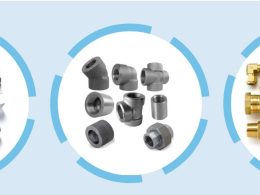As technology continues to evolve, so does the way we collect data. Gone are the days of manual data entry and tedious spreadsheets. With auto data collection, businesses can gather information quickly and efficiently without any human intervention. This groundbreaking technology is transforming industries and changing the way we do business. In this blog post, we’ll take an inside look at auto data collection – how it works, its benefits and challenges, as well as what the future holds for this innovative technology. So buckle up and let’s dive in!
What is auto data collection?
Auto data collection is a process of automatically collecting and analyzing data from various sources without any human intervention. This technology uses sensors, software, machine learning algorithms, and other advanced techniques to gather insights from the collected data.
One of the most common examples of auto data collection is in vehicles. Cars today are equipped with numerous sensors that collect information about vehicle speed, fuel consumption, tire pressure, engine performance, and more. This information is then transmitted to a central system for analysis.
Auto data collection can also be used in industries such as healthcare, retail, logistics and transportation. In healthcare for example it can help monitor patient vital signs or medication adherence through wearable devices that collect biometric data.
Auto-data-collection provides businesses with valuable insights into customer behavior patterns so they can make informed decisions based on real-time actionable intelligence rather than guesswork or intuition.
How does it work?
Auto data collection is a complex process that involves various technologies and methodologies. It starts with the installation of sensors and devices in vehicles to gather information about their performance, location, speed, fuel consumption, and other relevant metrics.
These sensors are connected to a central data processing unit that collects, stores and analyzes the data using sophisticated algorithms and machine learning techniques. The processed data is then used by automotive manufacturers, dealerships, insurance companies as well as third-party service providers for various purposes such as improving vehicle performance, reducing maintenance costs or enabling remote diagnostics.
One of the key components of auto data collection technology is telematics. Telematics refers to the use of telecommunications systems to transmit information over long distances. In cars equipped with telematics systems like GPS navigators and cellular modems they can send real-time location-based information back to servers on land while also receiving instructions from them.
Another important feature of auto data collection technology is its ability to provide insights into driver behavior patterns which can be used by insurers for risk assessment purposes. For instance through this method we could track how often drivers break traffic laws or exceed speed limits thus determining their driving habits more accurately
Auto Data Collection uses advanced technological capabilities combined with statistical tools allowing it an incomparable level of precision in vehicle monitoring providing valuable insights for businesses across all industries related to automobile ownership including but not limited too safety measures , cost efficiency improvements ,and increased productivity amongst others
The benefits of auto data collection
Auto data collection has become an essential tool for businesses looking to gain valuable insights into their operations. There are several benefits associated with this technology, including improved efficiency, increased accuracy and better decision-making.
One of the most significant advantages of auto data collection is the speed at which it can gather and process information. This means that businesses can quickly access critical operational data and make informed decisions based on real-time insights.
Another benefit of auto data collection is its ability to eliminate human error. By automating data collection processes, organizations can avoid mistakes caused by manual entry or other human errors. As a result, they improve their overall accuracy in tracking inventory levels, production rates, sales figures and more.
Auto data collection also provides companies with greater visibility into their supply chain management processes. With detailed information about product movement from suppliers to manufacturers to distributors, organizations can identify areas where improvements are needed and optimize their logistics network for maximum efficiency.
Moreover, this technology enables businesses to analyze customer behavior patterns through customer relationship management (CRM) systems that track customer interactions across multiple channels such as social media platforms or online storefronts. They use these insights to create personalized marketing campaigns aimed at driving sales growth while maintaining brand loyalty among customers.
Auto data collection offers many benefits for companies seeking to get ahead in today’s competitive market environment. From improved efficiency and accuracy to enhanced supply chain visibility and better-informed decision-making capabilities; there is no doubt that this groundbreaking technology will continue shaping our future business landscape positively!
The challenges of auto data collection
As with any new technology, auto data collection comes with its own set of challenges. One major challenge is ensuring the security and privacy of the collected data. With an increase in cyber attacks and data breaches, it’s important to have robust security measures in place to protect sensitive information.
Another challenge is making sure that the collected data is accurate and reliable. There may be errors or inconsistencies in the way that certain sensors collect information, which could lead to incorrect conclusions being drawn from the data.
Additionally, there are ethical considerations around how this data can be used. It’s important for companies collecting this data to be transparent about their intentions and ensure that they are not using it in a harmful or discriminatory manner.
There is also a potential for bias in auto data collection due to limitations in sensor technology or algorithms used for analysis. This could result in inaccurate or incomplete insights into consumer behavior patterns.
Despite these challenges, many experts believe that auto data collection has enormous potential benefits for industries ranging from healthcare to transportation. As we continue to develop this technology and address these issues head-on, we will undoubtedly unlock even more valuable insights into human behavior and preferences than ever before.
The future of auto data collection
As we move forward, auto data collection will continue to evolve and become more sophisticated. The integration of machine learning algorithms and artificial intelligence technology will enable businesses to gather even more granular insights into consumer behavior and preferences.
However, as with any technological advancement, there are also concerns regarding privacy. With the vast amount of personal information being collected through these technologies, it is important for companies to prioritize data security and obtain user consent before collecting any sensitive information.
Auto data collection has revolutionized the way businesses gather and analyze consumer insights. Its benefits span across industries from healthcare to retail. As we look ahead towards the future of this groundbreaking technology, it is important for companies to remain responsible in their use of data collection methods while continuing to push boundaries in innovation.












